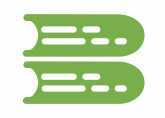
Model Libraries
20-sim comes with a large collection of components and submodels which are stored in libraries. The libraries are standard available in every version of 20-sim. With these library components, you can create hydraulic systems, mechanical structures, electric drives, control systems and much more. You can inspect the libraries by clicking the Library tab at the left side of the Editor.
Iconic Diagrams
The Iconic Diagrams library contains physical building blocks for electrical systems, mechanics, hydraulics and thermal systems.
Electric
- Various voltage and current sources
- Inductors, resistors, capacitors, etc.
- Diodes, op-amps and rectifiers
Hydraulic
- Orifices and laminar resistances
- Cylinders, accumulators, tanks
- Pumps and motors
- Valves
- Flow, power and pressure sensors
Thermal
- Heat capacity and heat flow
- Convection and radiation elements
- Sensors
- Heat generators
Mechanical
- Inertia’s, springs, dampers, etc.
- Bearings, backlash and clutch models
- Advanced friction models (LuGre, Dahl, KFM)
- Belts, spindles, gears and differentials
- Various types of sensors and encoders
All elements in the mechanical library are defined for the rotational as well as the translational domain. Furthermore, there is a special library for 2D and 3D bodies with small rotations.
Signal
The signal library contains a large collection of building bocks for Block Diagrams.
- Gain, integrate, differentiate, delay, etc.
- Several filter models (Butterworth, Bessel)
- Discrete elements (AD, DA, sample, hold)
- Wave and signal generators
- Logical operators
- Various controllers
Bond Graph
20-sim contains a bond graph library with all the standard Bond Graph Elements.
- Sources: Se, Sf, MSe, MSf
- Storage elements: I, C
- Resistor: R
- Transformers: TF, GY, MTF, MGY
- Junctions 1, 0, …
You can create custom bond graph elements and add them to the library.
Customizing
All 20-sim models are stored in files. A folder with a collection of model files is called a model library. In the Editor setting you can define which model libraries should be displayed in the Editor. All models are open. You can inspect their contents and change them to create new models. By collecting models in a new folder, you can create custom libraries.
Read More
You can find more detailed information on the 20-sim libraries and the blocks that are contained in the 20-sim webhelp.